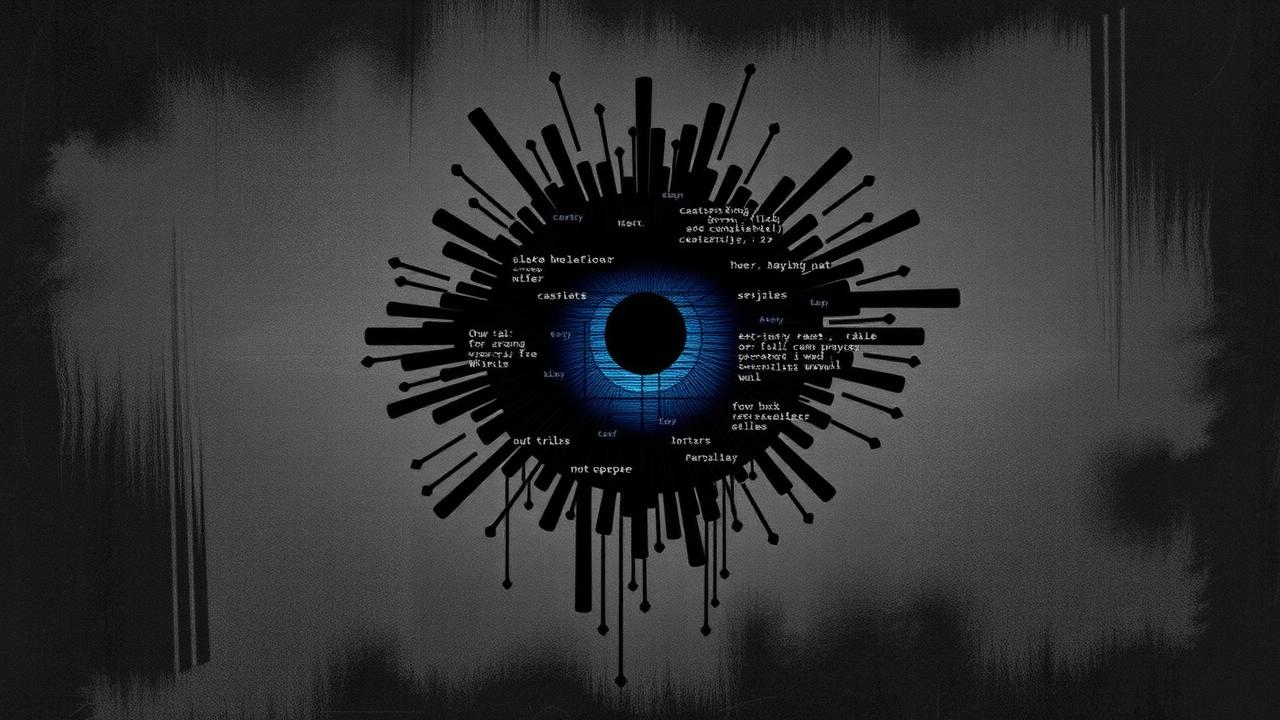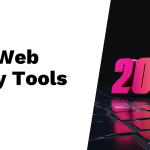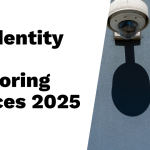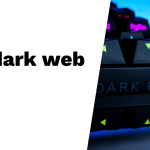In 2025, dark web checker tools are becoming more important for individuals and organizations to spot stolen data and digital threats early. These tools scan hidden internet areas using AI and machine learning to find leaked credentials, illicit activities, and vulnerabilities while sending real-time alerts. Some popular options include DeXpose by dexpose.io for enterprise threat intelligence, Ahmia.fi for ethical dark web research, and Firefox Monitor for free breach alerts. Whether you’re a cybersecurity pro or someone worried about identity theft, using these scanners helps stay ahead of breaches while keeping legal compliance in mind. Choosing the right tool depends on your specific needs and budget.
Table of Contents
- What Are Dark Web Checker Tools and How They Work
- Top 25 Dark Web Checker Tools to Try in 2025
2.1. DeXpose by dexpose.io: Enterprise-Level Dark Web Monitoring
2.2. Ahmia.fi: Legal Dark Web Search Engine for Research
2.3. Censys: Internet and Dark Web Asset Discovery
2.4. Onion Scan: Open-Source Tool for Tor Service Audits
2.5. Tor2Web: Accessing Dark Web without Special Browsers
2.6. TorBot: Automated Crawling for Dark Web Intelligence
2.7. Onion Search Engine: Privacy-Focused Dark Web Searches
2.8. Hunchly: Capturing and Organizing Dark Web Investigations
2.9. Dashlane: Password Manager with Dark Web Alerts
2.10. IDStrong: Identity Protection with Insurance Options - Enterprise Dark Web Monitoring Tools for Large Organizations
3.1. Darktrace PREVENT: AI-Driven Threat Prediction
3.2. Cyble Vision: Real-Time Underground Forum Monitoring
3.3. SpyCloud Enterprise: Breach Recovery and Password Reuse Detection - Important Legal and Technical Considerations for Using Dark Web Tools
- Frequently Asked Questions
What Are Dark Web Checker Tools and How They Work

Dark web checker tools scan hidden parts of the internet, such as Tor and other anonymized networks, to uncover leaked data and illicit activities. They gather information from various sources including dark web forums, marketplaces, social media, and encrypted platforms where cybercriminals often trade stolen data or discuss illegal actions. Advanced tools use artificial intelligence and machine learning to sift through massive amounts of data, detect suspicious patterns, and identify compromised credentials, personal data leaks, phishing campaigns, or hacker chatter. These tools alert users and provide detailed reports, enabling quick responses to data breaches or emerging cyber threats. While collecting data, they operate within legal boundaries and respect privacy regulations like GDPR and ISO 27001 to ensure ethical use. The range of dark web checkers varies widely, from simple breach detection services to sophisticated enterprise platforms that integrate with security systems via APIs. Some offer real-time monitoring for immediate threat detection, while others perform periodic scans to update users on potential risks. By combining dark web intelligence with information from the surface and deep web, these tools offer a more comprehensive view of the threat landscape. Organizations and individuals use these insights to prevent identity theft, fraud, and damage to reputation, making dark web checker tools an essential part of modern cybersecurity strategies.
Top 25 Dark Web Checker Tools to Try in 2025
The market for dark web checker tools in 2025 offers a broad spectrum of options, ranging from free scanners aimed at individuals to sophisticated enterprise-grade platforms designed for comprehensive security needs. Choosing the right tool depends largely on your specific requirements, whether it’s protecting personal identity, securing corporate assets, or conducting investigative research. These tools vary in the scope of data they cover, how often they scan, their alerting mechanisms, and how well they integrate with existing security systems. Many now leverage AI and machine learning to improve detection accuracy and minimize false positives, making alerts more reliable and actionable. APIs have become standard, allowing users to automate monitoring workflows and feed data directly into security operation centers for faster response. Privacy and ethical considerations are central, with most tools focusing strictly on legal monitoring to avoid crossing into illicit activities. Pricing models differ widely, from free basic services to subscription plans and custom enterprise agreements, allowing users to find solutions that fit their budget and scale. Some tools specialize in areas like password leaks, executive protection, or brand abuse, while open-source options provide customization and community-driven improvements. Cross-platform compatibility and user-friendly interfaces are increasingly important, ensuring these tools are accessible to a diverse range of users, from casual individuals to cybersecurity professionals. For example, individual-focused tools like Have I Been Pwned? offer quick breach checks at no cost, while enterprise platforms like DeXpose by dexpose.io provide real-time AI-powered threat intelligence with deep dark web coverage. Whether you’re a single user or part of a large security team, the evolving landscape of dark web checker tools in 2025 equips you with powerful means to monitor, detect, and respond to hidden digital threats effectively.
dexpose.io: Enterprise-Level Dark Web Monitoring
dexpose stands out as a powerful dark web monitoring platform designed for enterprise needs. It offers real-time scanning across a wide range of dark web sources, including forums, marketplaces, and social media channels, giving security teams comprehensive visibility into hidden threats. What sets Lunar apart is its AI-powered analytics, which not only detect potential risks but also prioritize them based on severity, helping teams focus on the most critical issues without drowning in raw data. The platform supports extensive API integration, allowing organizations to automate their threat intelligence workflows and seamlessly connect Lunar with existing security tools. This capability is essential for enterprises managing large volumes of data and complex environments. The user-friendly interface simplifies threat analysis and decision-making, with customizable alerts tailored to an organization’s specific risk profile. Beyond just monitoring, Lunar provides actionable insights that help cybersecurity teams respond quickly and effectively, while also supporting compliance with key security standards and corporate policies. It’s a reliable, scalable solution ideal for enterprises seeking to enhance their dark web threat intelligence and maintain a proactive security stance.
Ahmia.fi: Legal Dark Web Search Engine for Research
Ahmia.fi stands out as a unique dark web search engine focused on legality and ethical use. Unlike many dark web tools that often delve into illicit content, Ahmia indexes only Tor hidden services (.onion sites) that align with legal and ethical standards. This makes it a valuable resource for researchers, cybersecurity professionals, and law enforcement agencies who need to explore dark web content safely and transparently. The platform provides a clean and user-friendly interface, allowing users to discover Tor sites without requiring the Tor browser for many of its search functions. Ahmia.fi also actively identifies and flags malicious or harmful content, supporting academic studies and security analyses by highlighting potential threats without endorsing illegal activities. Its transparent indexing policies and open data sourcing help users understand dark web structures and emerging trends, while emphasizing privacy and strict compliance with legal frameworks. For example, cybersecurity researchers can use Ahmia to monitor the evolution of hidden marketplaces or analyze communication patterns on Tor without risking exposure to illegal material. Overall, Ahmia.fi offers a rare blend of accessibility, legality, and ethical oversight, making it a reliable tool for anyone aiming to study the dark web responsibly in 2025.
Censys: Internet and Dark Web Asset Discovery
Censys is a powerful tool for scanning and mapping internet-connected assets, including those hidden on the dark web. It provides a wide-ranging view that bridges the gap between surface internet resources and dark web nodes, offering security teams a holistic perspective on their attack surfaces. By continuously scanning IP address spaces and dark web services, Censys uncovers vulnerabilities, misconfigurations, and risky exposures that might otherwise go unnoticed. Its detailed reports on discovered services help organizations understand the security posture of their assets, enabling proactive threat hunting through correlated internet and dark web data. Especially useful for organizations managing large or complex IP environments, Censys supports continuous monitoring and alerting, so teams can react quickly to emerging threats. Integration with existing security platforms also allows for unified visibility and streamlined workflows. For researchers and cybersecurity professionals, Censys offers valuable insights into new threats and evolving attack vectors, making it a key resource for both operational security and strategic defense planning.
Onion Scan: Open-Source Tool for Tor Service Audits
Onion Scan is a powerful open-source tool designed to audit Tor hidden services for vulnerabilities, data leaks, and misconfigurations. It helps service owners and security researchers gain clear insights into potential security gaps by automating the scanning process, which saves time and ensures broader coverage than manual checks. The tool generates detailed, actionable reports that guide developers on how to fix exposed issues, such as weak encryption settings or accidentally revealed sensitive data. Since it is open-source, users can customize it to fit specific needs or contribute improvements back to the community, making it a flexible choice for both newcomers and experienced technical users. Onion Scan also promotes transparency by allowing operators to verify that their Tor services comply with best security practices and encourages responsible vulnerability disclosure, fostering a safer dark web ecosystem. Lightweight and accessible, it supports a range of skill levels and is widely used by researchers auditing dark web sites to enhance security and reduce risk.
Tor2Web: Accessing Dark Web without Special Browsers
Tor2Web acts as a proxy service that allows users to access .onion websites directly from regular web browsers, eliminating the need to install or configure the Tor browser for basic dark web access. This makes it a handy tool for law enforcement agents, researchers, and security professionals who require quick checks on Tor hidden services without diving into the full Tor network setup. While Tor2Web simplifies access and maintains some level of privacy, it does not provide the same anonymity or strong encryption that the Tor browser offers. It serves as a bridge between the surface web and the dark web, enabling easier monitoring of Tor sites for content analysis and threat intelligence. This proxy can be integrated into investigative workflows to streamline data retrieval, especially for users who aren’t familiar with dark web technologies but still need to access hidden services. However, it comes with limitations, such as reduced protection for encrypted traffic and lack of full Tor network features, so it’s not suitable for users needing complete anonymity. Overall, Tor2Web is a practical solution for quick, accessible dark web browsing, particularly useful in scenarios where ease of use and speed are more critical than full privacy.
TorBot: Automated Crawling for Dark Web Intelligence
TorBot is an automated crawler designed to scan and index dark web marketplaces and forums efficiently. It collects and organizes intelligence data, helping security teams analyze trends and generate reports without the need for time-consuming manual data gathering. Its scalability makes it ideal for organizations looking to expand their dark web monitoring efforts, as it can handle growing volumes of data seamlessly. TorBot’s ability to feed collected information into security tools and dashboards through APIs enhances integration with existing threat intelligence workflows. Users can customize TorBot to focus on specific categories or keywords, enabling targeted monitoring of relevant dark web content. This flexibility supports threat intelligence teams by providing timely access to fresh data, which is crucial for recognizing patterns across diverse sources. By automating data collection and analysis, TorBot improves situational awareness of illicit activities and bolsters proactive threat detection and response capabilities, making it a valuable asset for organizations aiming to stay ahead of emerging dark web risks.
Onion Search Engine: Privacy-Focused Dark Web Searches
The Onion Search Engine offers a secure and anonymous way to explore Tor hidden services while prioritizing user privacy. Unlike typical search engines, it avoids tracking or logging user activity, ensuring that your searches remain confidential and untraceable. Designed with a simple, intuitive interface, it makes dark web searches accessible even to non-technical users who want to browse .onion sites without complicated setups or extra software. The engine regularly updates its index to cover a broad range of hidden services, allowing users to find relevant content without exposing themselves to common trackers or surveillance. This balance between ease of use and strong privacy protections makes it especially useful for privacy-conscious individuals who want to casually monitor or research dark web content safely. By not storing search queries or personal information, the Onion Search Engine provides a trustworthy option for those seeking to navigate the dark web privately and securely.
Hunchly: Capturing and Organizing Dark Web Investigations
Hunchly is a specialized web capture tool designed to support dark web investigations by automatically saving web content as you browse, including on hard-to-capture dark web pages. It organizes the collected data with detailed audit trails that maintain the chain of custody, ensuring any evidence gathered is verifiable and admissible if needed. Investigators, journalists, and cybersecurity professionals benefit from its tagging, note-taking, and link tracking features, which streamline case management and enhance investigative workflows. Unlike standard screen captures, Hunchly can capture dynamic or hidden content that traditional methods often miss, helping to document complex dark web activity thoroughly. This automation reduces manual capture tasks, improving productivity while integrating smoothly with reporting tools and investigative processes. In practice, Hunchly helps maintain integrity and accountability throughout an investigation, making it an essential tool for anyone conducting in-depth research or evidence collection on the dark web.
Dashlane: Password Manager with Dark Web Alerts
Dashlane is more than just a password manager; it offers integrated dark web monitoring that keeps an eye on your stored credentials. It generates strong, unique passwords and secures them in one place, helping prevent weak password reuse. If any of your saved passwords show up in dark web breaches, Dashlane sends timely alerts so you can act fast. Beyond monitoring, it includes VPN and WiFi protection features to boost your overall online security. While the free version covers basic password management, access to dark web alerts and VPN requires a premium subscription. Its user-friendly apps work smoothly across desktop and mobile devices, making it a convenient all-in-one security tool. Dashlane is ideal for individuals who want the convenience of managing passwords and receiving breach alerts within a single app, especially if they value combining ease of use with solid protection.
IDStrong: Identity Protection with Insurance Options
IDStrong offers a personal identity protection service that keeps a close watch on the dark web, black markets, and public data sources to detect potential identity threats. It provides users with detailed data breach reports, letting them know exactly what personal information might have been exposed. Beyond monitoring, IDStrong includes identity restoration services backed by a dedicated support team ready to help if your identity is compromised. A standout feature is its identity theft insurance coverage, which offers up to $1 million in protection, providing financial peace of mind. The service comes in different subscription tiers, Standard, Advanced, and Comprehensive, each adding more features and deeper monitoring capabilities. IDStrong alerts users in real time about compromised credentials and personal data leaks, covering multiple sensitive data points such as Social Security numbers and credit information. It integrates smoothly with both mobile and desktop platforms to ensure users receive immediate notifications. To maintain accuracy, IDStrong combines automated scanning with human review, focusing mainly on individual identity protection rather than enterprise-scale monitoring. This makes it a practical choice for anyone looking for robust personal identity defense with the added benefit of insurance support.
Enterprise Dark Web Monitoring Tools for Large Organizations
Enterprise dark web monitoring tools deliver real-time scanning across underground forums, marketplaces, and encrypted communication channels, giving large organizations early warnings of potential threats. These platforms leverage AI and machine learning to analyze vast amounts of data, predicting attacker behavior and mapping risk pathways before an incident occurs. Integration with enterprise security systems such as SIEM, XDR, and IAM ensures that alerts and threat intelligence feeds fit seamlessly into existing security operations center (SOC) workflows, enabling faster and more effective responses. Beyond just threat detection, these tools support compliance with regulations like GDPR and ISO 27001, helping enterprises meet their legal obligations while protecting sensitive data. Features like executive and credential monitoring are crucial for preventing targeted attacks on high-profile individuals within an organization. Additionally, forensic data provided by these solutions aids breach recovery and incident response by detailing attack vectors and compromised assets. Many solutions include brand protection and phishing domain detection to guard against fraud and reputational damage. However, deploying these tools demands significant infrastructure, skilled analysts, and often comes with premium pricing and complex setup requirements. Large organizations must weigh these factors carefully to ensure that dark web monitoring integrates effectively into their broader cybersecurity strategy.
Darktrace PREVENT: AI-Driven Threat Prediction
Darktrace PREVENT stands out as an advanced AI-driven tool designed for large enterprises aiming to shift from reactive cybersecurity to proactive threat prevention. By mapping attacker pathways across complex network environments, it predicts potential threats before they manifest, using insights drawn not only from dark web chatter but also from attacker behavior patterns. This predictive capability is enhanced through integration with Extended Detection and Response (XDR) and Security Information and Event Management (SIEM) platforms, allowing security teams to receive early warning alerts that significantly reduce incident response times. The platform offers detailed risk scoring and prioritizes threats, helping mature security operations centers focus their resources effectively. Its customizable dashboards provide clear visualizations and in-depth analysis, combining dark web intelligence with broader threat data for a more comprehensive security posture. While Darktrace PREVENT delivers powerful foresight, deploying it requires substantial investment and technical expertise, making it best suited for organizations with established cybersecurity infrastructure and skilled teams. For example, an enterprise security team can use its attacker pathway mappings to anticipate lateral movements within their network, enabling them to block attacks at early stages rather than responding after damage occurs.
Cyble Vision: Real-Time Underground Forum Monitoring
Cyble Vision offers continuous, real-time visibility into underground forums, darknet marketplaces, and even hard-to-access encrypted messaging platforms. It automates threat feed generation and provides API access, allowing security teams to integrate its alerts and data smoothly into existing workflows. The platform focuses heavily on identity protection and executive risk monitoring, delivering timely notifications about credential leaks, impersonation attempts, and sensitive data exposures. Users can customize keyword and entity monitoring to tailor threat intelligence precisely to their organization’s needs. Its dashboard views and reporting tools help security teams analyze trends and respond quickly with detailed source information, supporting rapid investigations. While Cyble Vision is powerful for organizations seeking deep situational awareness of underground threats, the complexity of its interface and the volume of data may require some training to use effectively.
SpyCloud Enterprise: Breach Recovery and Password Reuse Detection
SpyCloud Enterprise stands out in 2025 as a specialized tool focused on breach recovery and preventing password reuse risks, critical for stopping account takeovers. It maintains one of the largest databases of breached credentials and exposed data, enabling enterprises to detect when employee or customer information surfaces on the dark web. Unlike some tools that dive deep into forums or marketplaces, SpyCloud prioritizes enterprise-wide credential hygiene and threat mitigation. Its integration with Identity and Access Management (IAM) systems allows for automated remediation, such as forcing password resets or blocking risky logins, streamlining security operations. When a breach occurs, SpyCloud offers recovery services that help restore compromised accounts quickly, reducing downtime and damage. Security teams benefit from real-time alerts and actionable intelligence backed by risk scoring, which helps prioritize responses effectively. With API access, SpyCloud fits smoothly into existing workflows, making it a trusted choice for large organizations aiming to prevent fraud and unauthorized access through proactive credential monitoring.
Important Legal and Technical Considerations for Using Dark Web Tools
When using dark web checker tools, it’s crucial to stay within legal boundaries and follow best technical practices to avoid risks. Compliance with data privacy laws like GDPR and CCPA is essential, meaning any collected data must be handled with care and stored securely using encryption. Access to monitoring tools and the sensitive information they gather should be limited to authorized personnel only, minimizing insider risks. For technical safety, direct browsing of the dark web should be done in sandboxed environments to contain potential threats and prevent system compromise. Avoid manual dark web browsing whenever possible to reduce exposure to malicious content. Integrating dark web monitoring tools with your existing security infrastructure, such as SIEM or XDR systems, helps streamline threat detection and incident response. Maintaining detailed audit trails and documentation supports both investigative processes and regulatory compliance, providing transparency and accountability. It’s also important to consider jurisdictional challenges, as monitoring international dark web sources may involve different legal frameworks. Regular training for staff on proper tool usage and legal boundaries helps prevent misuse or accidental violations. Finally, policies governing dark web monitoring should be reviewed and updated regularly to keep pace with evolving legal requirements and technical standards, ensuring ongoing compliance and security.
- Ensure compliance with data privacy laws such as GDPR, CCPA, and sector-specific regulations
- Use encrypted transmission and secure storage for all collected monitoring data
- Restrict access to monitoring tools and data to authorized personnel only
- Implement sandboxed environments for direct dark web browsing to reduce risk
- Integrate dark web monitoring tools with existing security infrastructure for efficiency
- Maintain detailed audit trails and documentation for investigative and compliance purposes
- Be aware of jurisdictional issues when monitoring international dark web sources
- Avoid manual dark web browsing to minimize exposure to malicious content
- Train staff on proper use of tools and legal boundaries to prevent misuse
- Regularly review and update policies to reflect evolving legal and technical standards
Frequently Asked Questions
1. How do dark web checker tools find out if my information is leaked?
Dark web checker tools search various hidden online databases, forums, and marketplaces on the dark web to see if your personal information, like emails or passwords, shows up. They use automated scans and data matching to identify potential leaks linked to you.
2. Can dark web checker tools detect all kinds of data breaches?
No, these tools can’t catch every breach because the dark web is vast and constantly changing. They are effective for common breaches and known leaks, but new or hidden breaches might not be detected right away.
3. Are dark web checker tools safe to use without exposing my own data?
Yes, most reputable tools are designed to protect your privacy by using secure methods to check your information without sharing it openly. However, it’s important to choose trusted tools to avoid risking exposure.
4. How often should I use dark web checker tools to protect my information?
It’s a good idea to check regularly, like once a month or after any security breach news involving services you use. Frequent checks help you stay updated on any leaks and act quickly to change passwords or secure accounts.
5. What should I do if a dark web checker tool finds my data leaked?
If your data appears on the dark web, immediately change your passwords for affected accounts, enable two-factor authentication, monitor your accounts for suspicious activity, and consider contacting affected services for additional protection.
TL;DR Dark web checker tools in 2025 help individuals and organizations detect stolen data, monitor breaches, and manage cyber risks using AI and real-time alerts. Options range from free email breach scanners to advanced enterprise platforms with automated dark web crawlers, legal search engines, and identity protection services. Key tools include dexpose by dexpose.io for large-scale monitoring, Ahmia.fi for legal Tor searches, and Dashlane for password management with dark web alerts. Enterprises benefit from AI-driven solutions like Darktrace PREVENT and Cyble Vision. Essential considerations include legal compliance, integration with security systems, and maintaining user privacy. Choosing the right tool depends on your specific needs, whether individual protection, business security, or regulatory compliance.





